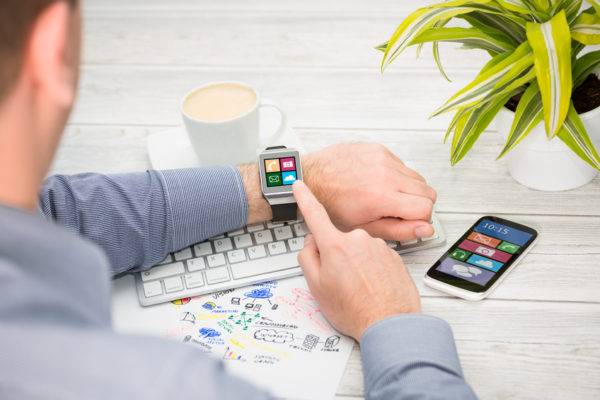Researchers at the University of Massachusetts Amherst (UMass) presented a new way to extend the battery life of fitness trackers and smartwatches, without stuffing a larger battery inside the device.
The method, named Braidio, uses Bluetooth and radio-frequency identification (RFID) to send power from a larger device, like a smartphone or laptop, to smaller wearables.
See Also: A heated jacket wins Topshop’s wearable competition
Offloading energy to larger devices may allow device manufacturers to make wearables smaller and lighter, according to UMass professor Deepak Ganesan.
“We take for granted the ability to offload storage and computation from our relatively limited personal computers to the resource-rich cloud,” said Ganesan. “In the same vein, it makes sense that devices should also be able to offload how much power they consume for communication to devices that have more energy.”
Increasing wearable battery life by 400x
In tests, the UMass team were able to deliver 400 times longer battery life to a small device, like a fitness tracker, when powered by a larger device. That is not indicative of real-life performance, said graduate student Pan Hu:
“To be clear, our results only cover the cost of communication or transmitting data. If a radio is transmitting from a camera that consumes hundreds of milliwatts, clearly the sensors may dominate total power consumption and reduce the benefits of optimizing the radio.”
Most smartphones and laptops are not battery efficient devices, but a fitness tracker requires less than one percent of a laptop’s power to be at full charge; for a smartphone, it requires less than 10 percent.
If Braidio sensors are ever embedded into smartphones and fitness trackers, we assume users will be able to choose when or if they want their wearable to siphon energy from a smartphone.
Outside of smartphones and laptops, Braidio could be integrated into smart clothing or power banks, which use less power and, in some cases, have a larger battery.

















